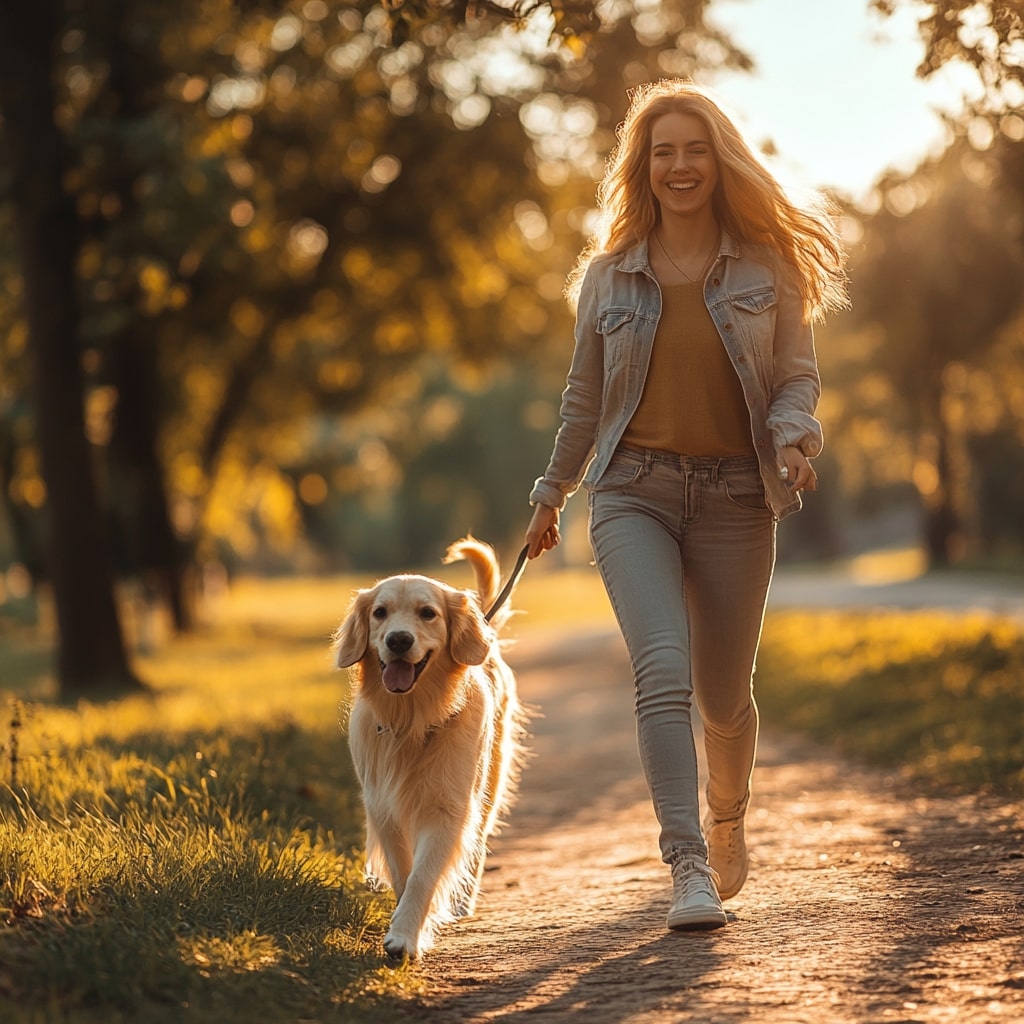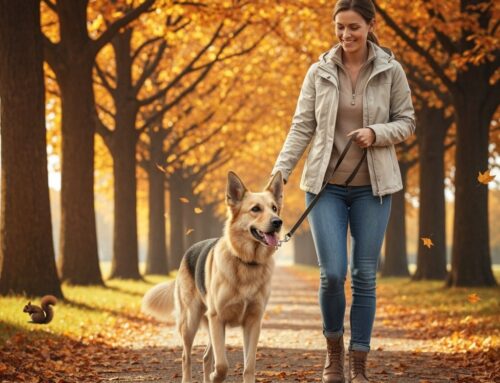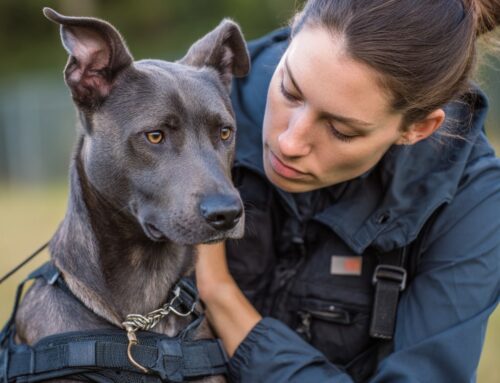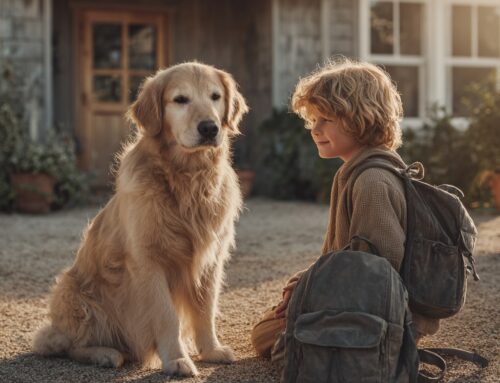Beginning leash training is an essential skill for any dog owner. Whether you’re raising a puppy or working with an older dog, a well-trained dog on a leash leads to a more enjoyable and stress-free experience for both you and your pet. Leash training isn’t just about training dogs to walk nicely; it also fosters good behavior, strengthens your bond, and ensures safety in public spaces.
In this ultimate beginner’s guide to leash training, we’ll walk you through everything you need to know, from choosing the right equipment to advanced leash techniques and great training tips in between. By the end of this guide, you’ll feel confident in training your dog to become a leash-walking pro!
Why Leash Training is Important
Leash training is one of the first and most important training steps for any dog. It’s not only crucial for control and safety but also for bonding with your dog. Proper leash manners can make walks enjoyable rather than stressful, giving both you and your dog the exercise and mental stimulation you need.
Some of the key benefits of leash training include:
- Safety: Keeping your dog close and under control reduces the risk of accidents, like darting into traffic or chasing other animals.
- Improved Behavior: Leash training can curb undesirable behaviors such as pulling, lunging, or jumping.
- Stronger Bond: Training requires trust and communication, strengthening your connection with your dog.
For both your dog’s well-being and your peace of mind, leash training should be a priority from the start.
Choosing the Right Equipment When Beginning Leash Training
Before you start training, it’s essential to have the right tools before you practice walking. The equipment you choose will make a significant difference in how effective and enjoyable the process is for both you and your dog.
Leash Types
There are several types of leashes to consider, each with pros and cons:
- Standard Leash: Typically 4-6 feet long, these are the most common and provide good control.
- Retractable Leash: Allows more freedom but can be challenging to manage during training.
- Slip Leash: Designed for more advanced training, these provide more control but can cause discomfort if used incorrectly. Better to let professionals handle this type of leash than using it for beginning leash training.
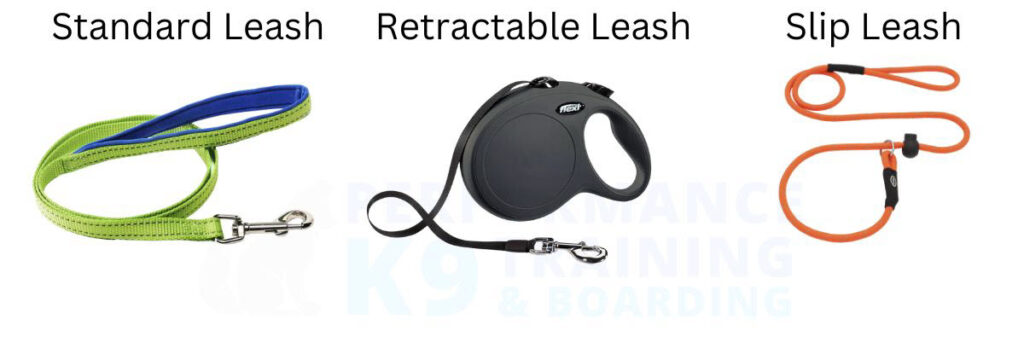
Collars
Your choice of collar is equally important. A comfortable, properly fitting collar can make leash training easier.
- Flat Collar: Simple and effective for most dogs.
Leash Length
For beginners, a 4-6 foot leash is ideal as it provides control without being overly restrictive. Longer leashes (10-30 feet) can be useful for recall training later on, but are generally not recommended during early leash training.
Introducing Your Dog to the Leash
Start slowly and introduce the leash in a positive and relaxed environment—preferably indoors or in your backyard.
Getting Comfortable
The goal here is to help your dog associate the leash with positive experiences. Let your dog sniff the leash, and gently clip it to their collar while giving them a few treats. Allow your dog to wear the leash without holding onto it at first, so they get used to the feeling of it trailing behind them. Gradually get them comfortable with the leash to help ease them to walk on a leash.
Positive Reinforcement
Use a few treats and praise generously during this process. Your dog should see the leash as a signal that fun things are about to happen—like going for a walk or getting a treat.
Teaching Basic Commands for Leash Walking
Once your dog is comfortable with the leash, it’s time to introduce basic commands that will make your walks smoother and more controlled.
“Heel” or “Walk with Me” Command
The “heel” command teaches your dog to walk by your side without pulling ahead. Start with your dog standing next to you. Say the command “heel” and begin walking. If your dog walks beside you, reward them with praise or a treat. If they pull, stop walking and wait until they return to your side before moving again.
“Stop” and “Sit” Commands
Teaching your dog to stop and sit on command is useful for traffic, crossings, or stopping to greet others. Practice this command by coming to a stop and saying “sit,” rewarding your dog when they do. Once your dog has mastered these commands, walks will become much more manageable.
Loose Leash Walking
The goal of leash training is to have your dog walk on a loose leash, without pulling or lagging behind. To teach loose leash walking, stop and stand still whenever your dog starts to pull. Once the leash slackens, reward them with praise or treats and continue walking.
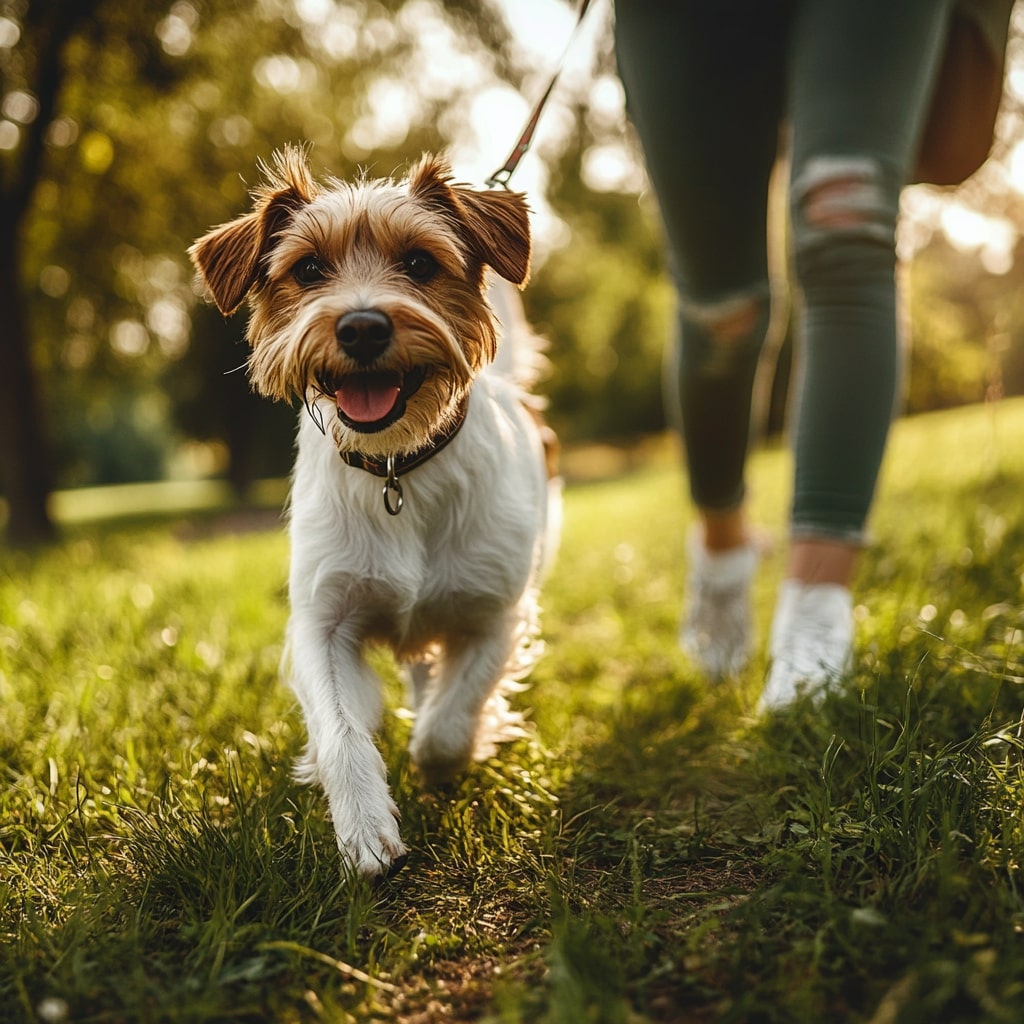
Dealing with Pulling and Other Common Issues
Leash training often comes with some challenges, such as pulling or lunging. Here’s how to do some leash training troubleshooting with your dog.
Pulling
If your dog pulls on the leash, resist the urge to yank it back. Instead, stop walking when the leash becomes taut, and wait until your dog returns to your side or the leash slackens. Praise and reward them for walking with you. Over time, they’ll learn that pulling gets them nowhere.
Lunging or Getting Distracted
Dogs can get distracted by passing cars, other dogs, or smells. To address lunging, try redirecting their focus to you using a command like “look” or “watch me” to get your dog’s attention. Whenever your dog looks at you instead of the distraction, reward them. This teaches them that paying attention to you is more rewarding than lunging at distractions.
Reacting to Other Dogs
If your dog becomes overly excited or anxious around other dogs, use the “sit” and “stay” commands to maintain control. Gradually expose them to other dogs from a distance, and use positive reinforcement when they remain calm.
Patience and Consistency are Key
Training requires time, patience, and repetition. Be consistent with your expectations, and keep training sessions short—10-15 minutes is ideal for beginners. If you encounter setbacks, don’t get discouraged. Dogs, like people, learn at different rates and are all unique, and some may need more time than others.
Advancing to Outdoor Training
Once your dog is comfortable walking on a leash indoors or in your backyard, it’s time to move training outdoors. Start in a quiet, familiar area and gradually introduce more distractions, such as new environments, people, and other animals.
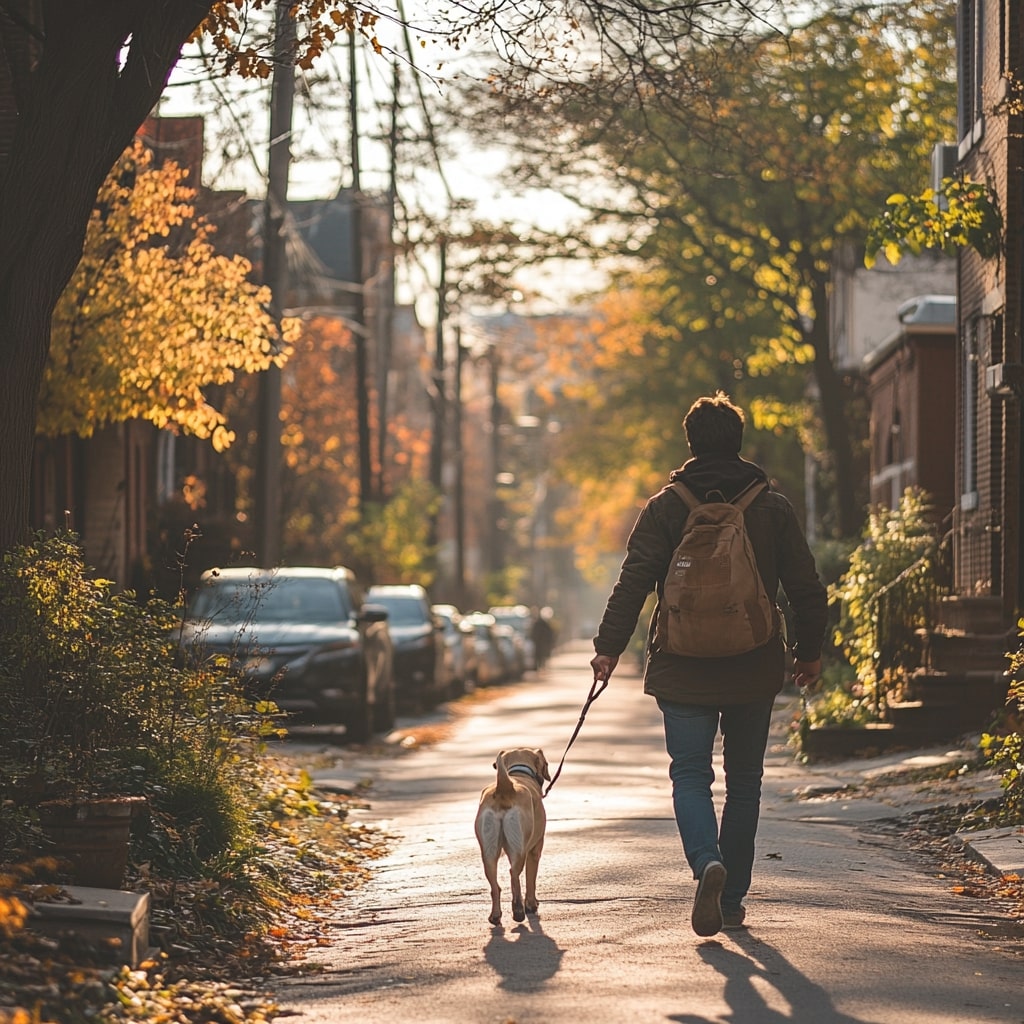
Incorporating Real-Life Scenarios
Practice loose leash walking in real-life scenarios, such as walking around your neighborhood or visiting a park. Be prepared to reinforce commands and keep a close eye on your dog’s behavior.
Socialization
Take time to expose your dog to various environments, sounds, other animals and people. Socialization is critical for a well-rounded dog, and it can also help reduce fear or anxiety during walks.
Advanced Leash Techniques
Once your dog master the basics, you can introduce more advanced techniques to make walks even more enjoyable and controlled.
Loose Leash Mastery
To ensure your dog consistently walks on a loose leash, practice in different settings. Gradually increase distractions and reinforce positive behavior. This helps to solidify your dog’s understanding that leash pulling will not get them where they want to go.
Recall Training While on Leash
Training your dog to come when called, even while on a leash, is important for safety. Start with a long leash and call your dog from a short distance. Reward them for returning to you, gradually increasing the distance over time.
Using Long Lines for Off-Leash Training
Once your dog is well-trained on a standard leash, you can use a long line (10-30 feet) to practice off-leash behavior in a controlled environment. This will prepare them for off-leash walks in the future.
Common Leash Training Mistakes to Avoid
While leash training, it’s essential to avoid common mistakes that can slow your progress or confuse your dog.
- Yanking or Pulling: Avoid yanking the leash when your dog misbehaves. This can cause stress or injury and lead to fear-based behaviors.
- Skipping Socialization: Failing to expose your dog to new environments can result in fear or anxiety. Make socialization part of your leash training routine.
- Not Rewarding Good Behavior: Always reward your dog for walking calmly and staying focused on you. Positive reinforcement builds a stronger relationship and encourages desirable behaviors.
Leash Training FAQs
How long does leash training take? Since all dogs are unique, leash training can take anywhere from a few weeks to several months, depending on your dog’s temperament, age, and consistency in training.
What should I do if my dog won’t stop pulling? If your dog continues to pull consider seeking the help of a professional trainer. You may also need to revisit basic leash training techniques.
Can leash training help with other behavioral issues? Yes! Leash training can help address problems like jumping, lunging, and reactivity. It also fosters better communication between you and your dog, which can improve overall behavior.
When to Consider Professional Dog Training
While many dog owners can successfully leash train their pets on their own, some situations may require the help of a professional dog trainer. If you’re facing persistent challenges or have a dog with specific behavioral issues, working with a certified trainer can be highly beneficial.
When to Seek Professional Help for Leash Training
If your dog continues to pull on the leash, lunges at other animals or people, or exhibits signs of anxiety or aggression during walks, professional dog training may be the solution. Trainers can provide personalized techniques to address these challenges, especially when regular training isn’t showing progress. Dogs with complex behavioral issues like reactivity or leash anxiety often benefit from professional guidance, as trainers can create a tailored plan to meet their specific needs.
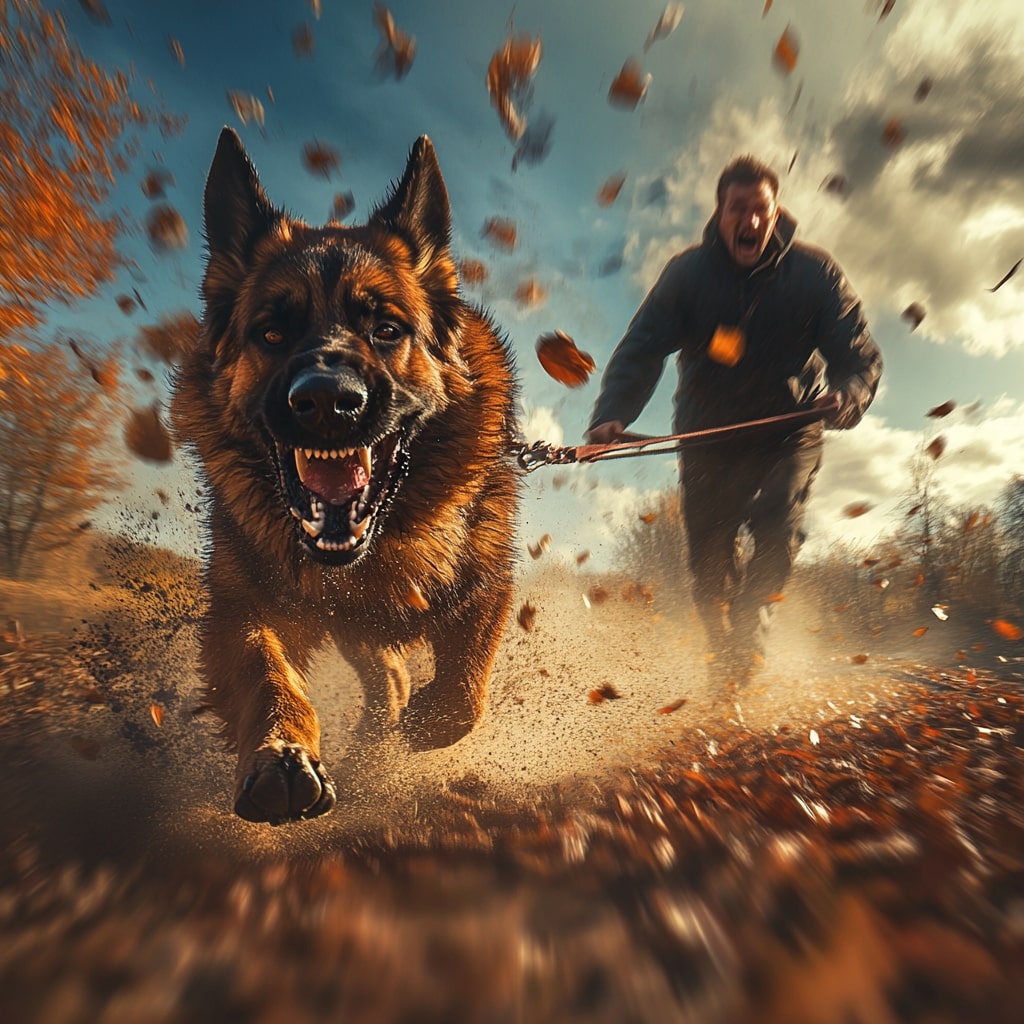
The benefits of professional training go beyond faster results. Certified trainers use advanced, positive reinforcement techniques to effectively address stubborn issues and improve behavior. They can also train you, the owner, to maintain consistency at home. When choosing a trainer, look for certifications from recognized organizations, experience with your dog’s particular issues, and a focus on reward-based methods to ensure both you and your dog are in good hands.
When to Enroll in Group Classes
In addition to one-on-one training, many professionals offer group classes that focus on basic obedience and leash training. These classes can be a great way to socialize your dog in a controlled environment while learning new skills.
Seeking professional help for leash training doesn’t mean you’ve failed; it’s simply a smart choice if you want to ensure your dog receives the best training possible, especially when faced with challenges. A professional dog trainer can guide both you and your dog toward better behavior, resulting in more enjoyable and stress-free walks.
Your Ultimate Guide to Beginning Leash Training
Leash training is a rewarding process that requires time, patience, and consistency. By starting with the right equipment, using positive reinforcement, and gradually advancing your dog’s skills, you’ll enjoy stress-free, pleasant walks with your furry friend. Whether you’re navigating distractions, working on loose leash walking, or introducing advanced techniques, remember that every step forward is progress towards a stronger bond and a more enjoyable experience for both you and your dog.
For dog owners seeking additional support, Performance K9 Training and Boarding offers a comprehensive Basic Behavior Modification Program that includes teaching dogs to walk politely on a leash. This program focuses on correcting leash pulling and ensuring your dog maintains the proper walking position. The training takes place under partial distraction and involves partial off-leash work, helping dogs develop the skills needed for real-world situations. With expert guidance from Performance K9 Training and Boarding, you and your dog can achieve a more enjoyable and controlled walking experience. Contact us today to get a free consultation to see if this program is right for you and your furry friend.



